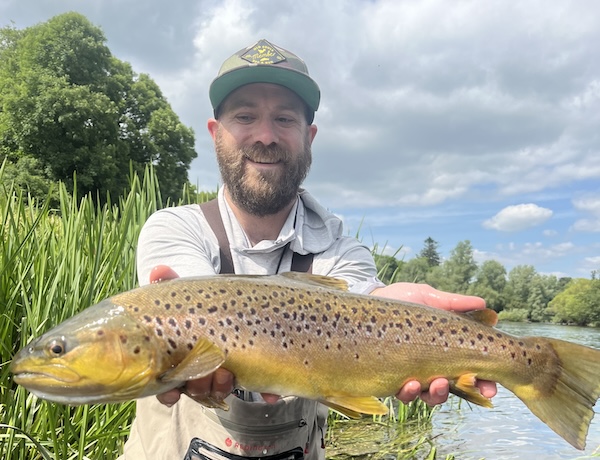William Gipe is the general manager of Old Souls in Cold Spring.
You’re a passionate fly fisherman. How did you find the sport?
I grew up near Chapel Hill, North Carolina, using conventional tackle for bream, catfish and largemouth bass. My parents wanted to get their crazy boys out of the house, so we fished in farm ponds and rivers using worms and corn. I started fly-fishing about 12 years ago, after moving to New York. A friend of a friend took me to the Neversink River in the Catskills. We were going for trout. I only caught a shad, but I became obsessed. I like things that aren’t easy. Eventually, I cracked the code. I primarily fish near Roscoe, where streams flow into the Beaverkill and Willowemoc Creek. A couple of times a year, I fish the West Branch of the Delaware from a drift boat.
Any favorite fish stories?
I was fishing the headwaters of a larger river in the Catskills — I won’t tell you where, exactly — and searching for brown trout. I ended up catching my personal-best brook trout. Normally you catch brook trout in small streams. But he was in much larger water. He was almost 13 inches, which is huge for a brookie.
Has fishing in New York changed over the past 10 years?
It’s better and will only continue to improve thanks to habitat improvement efforts by volunteers working with Trout Unlimited, along with the state Department of Environmental Conservation. In the Catskills, they’re removing unneeded dams, planting trees and removing culverts, allowing trout to get to smaller tributaries and reproduce. This allows for more fish and better-quality fish.
What do you think of programs where the DEC puts hatchery-grown fish in streams?
Stocking fish is great for places like Fishkill Creek that can’t support wild fish. People catch them, take them home and eat them. It’s great for spreading the joy of the sport. I don’t think we should stock water that already has wild fish, because the wild trout have to compete against something that’s not native and much larger. A great example of what to do is Esopus Creek near the Ashokan Reservoir in the Catskills. The state designated it as a wild trout fishery and gave it new regulations. They no longer stock the entirety of the Esopus. That allows wild trout to have babies and create a healthy trout population.
Many people find the idea of fly-fishing intimidating. What do you recommend?
Visit me here at Old Souls. I started out not knowing anyone in the sport. I went online and purchased a fly rod outfit for $200, including a reel, line and flies. If you don’t want to spend that much, you can look on Facebook Marketplace. A lot of people are intimidated by the flies, but you only need three flies to start: a pheasant tail, a parachute Adams and a woolly bugger. Those flies imitate some of the most common trout foods, like leeches, mayflies, crawfish, minnows and stoneflies. The key is learning where the fish sit in the stream and how to present the fly so that it looks natural. To get started, it’s a great idea to hire a guide for a half day and get a lesson.


